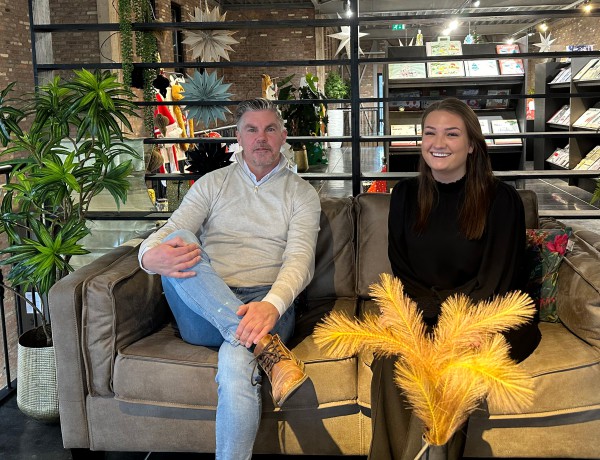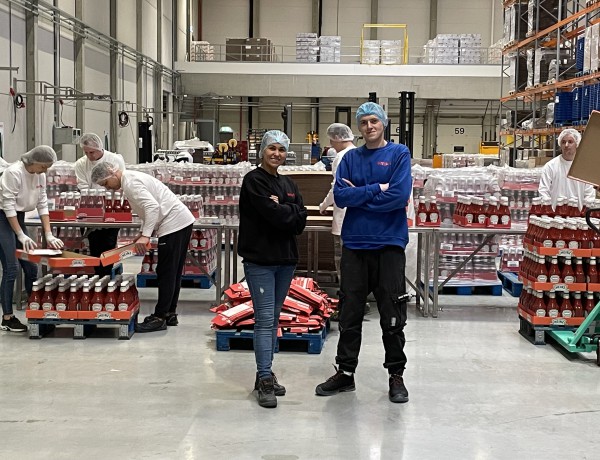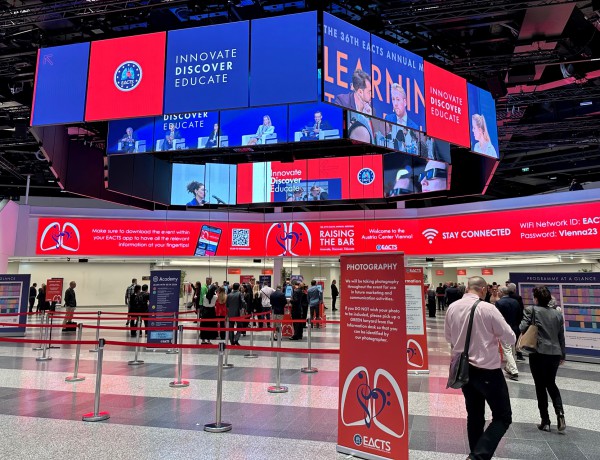The Vetipak site in Zeewolde is home to our successful long-term partnership with Bakker Logistics, part of the STEF group. It’s also where we work for Dynamic Products Factory, which develops creative products for the retail sector. We recently ensured that a multitude of party items in 3,300 displays reached their destinations with a well-known German retail chain. We joined forces to run the whole process from A to Z for D.P. Factory.
Co-packing meets product development part 2
Part 2: the practice
Mark van der Burgt recently shared his credo with us: involve co-packers in your product development at the earliest possible stage. Everyone benefits from this approach, as our CCO has been saying for years. A clear enough plea but... how does this work in practice? We put this question to Julie Navarro, Packaging and Quality Manager at Nestlé International Travel Retail in Switzerland.
Het Financieele Dagblad (the Dutch Financial Times) recently called the supply chain ‘rotten’. Would you agree with this description?
“Well, if you don’t have the full picture of the business, it can indeed be difficult to be proactive and efficient. This is one of the reasons why we decided to shake things up, back in 2017. Since then, we are explicitly aiming at seizing the opportunities of working together within real partnerships.”
What was the reason behind taking that step?
“It was a strategic reorientation. On the one hand we thought we could improve the quality of our product development ourselves. On the other we saw that certain suppliers could play a part in this, especially if we really got them involved. It was clear from Vetipak’s mindset and day-to-day practice that they also wanted to take that step. Our experience with the company led us to embark on the adventure with them. Strategy and practice came together nicely.”

“Vetipak employees attended workshops
at our offices in Switzerland”
You call it an adventure. Did it bring the tension of an adventure as well?
“We’re talking about large sums of money in a competitive market; that makes one less inclined to share information. But we engaged knowledge sessions to learn as much as possible from each other, with the objective to understand our conjoint challenges and opportunities. For example, Vetipak employees attended workshops at our offices in Switzerland for our Smarties Brands. Over the course of a single day, they received talks from our marketing department, our agency and our packaging supplier. This means they now can take into consideration all the relevant factors and make smart proposals on each project.”
What else do you do to take the partnership to that higher level?
“More than anything: go for it together, especially on new projects. Together with a colleague from procurement, I have weekly meetings with Vetipak; we then mostly discuss operational things.
During the quarterly business reviews we examine things in more depth: how has everything gone over the past few months, where do we want to be, what can we improve...? And then we also discuss plans for new product development.”
What tangible benefits does this intensive partnership yield?
“Some benefits you can quantify and some you can’t. Quantifiable results are of course the improvements in efficiency that you make together. Mostly: shorter lead times in project development. But also think of cost savings, such as those resulting from smart choices in relation to materials, packaging methods or approach. Non-quantifiable results include for example easy communications, being able to move fast and not needing to spell things out all the time.”
“Trust them, go on the journey with them
and don’t be afraid to share”
And are there any disadvantages to this approach?
“At the start we had to feel our way to a certain extent, as in any ‘new’ partnership really. But we quickly found our routine. Since then, I can see advantages only.”
What is your message to manufacturers that are reluctant to start with this kind of intensive partnership?
“I think you can guess my answer: take the plunge. If both sides are genuinely willing to make a difference together – even if it’s sometimes at your own ‘expense’ – then an intensive partnership from an early stage can yield a great deal. And I’d like to add something in relation to our experience with Vetipak: trust them, go on the journey with them and don’t be afraid to share. I’m confident that afterwards you will be happy of what you built with them.”


